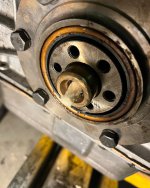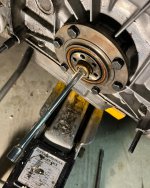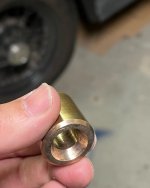The bush was in a new crankshaft so not sure of its origin.
A while ago I helped a friend replace one and after seeing a YouTube clip about using bread to remove the bush we gave it a go…. And it worked. It is a bit denser than grease so less likely to squeeze out… attached video of the successful extraction that time
Thanks again to all.
I am waiting for the new bush so will update when it comes time to replace it.
Cheers
A while ago I helped a friend replace one and after seeing a YouTube clip about using bread to remove the bush we gave it a go…. And it worked. It is a bit denser than grease so less likely to squeeze out… attached video of the successful extraction that time
Thanks again to all.
I am waiting for the new bush so will update when it comes time to replace it.
Cheers





